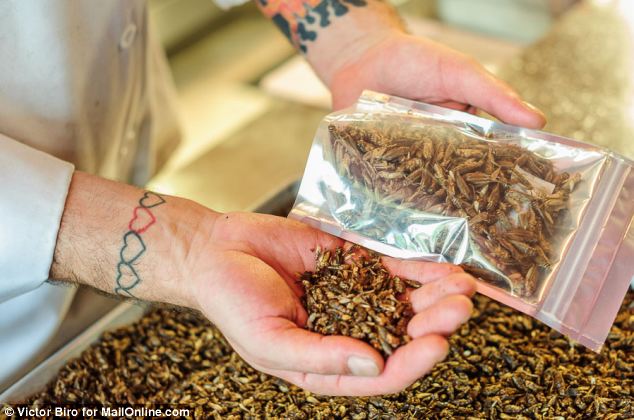Food Taboos and Cultural Identity in America: Eating Bugs
Our summer blog series “Perspectives from Anthropology of Food” presents work written by the students in the summer Anthropology of Food class (ML 641) in which they reflect on current issues, discuss assignments they have worked on, or address topics of particular interest to them. Today’s post is from Gastronomy student Stacy Mirabello.
 When presented with the idea of swapping out potato chips for a snack of crispy crickets, the typical American response generally includes slight twitches of the body, cringing, wrinkled noses, and expressions of disgust. American culture has developed strong aversions and visceral responses towards the thought of consuming insects on a regular basis, both in general and as a reliable food source. Entomophagy, the practice of eating insects, is deeply rooted in the evolution of humans, and how we perceive food, according to anthropologists, is a reflection of our ecology. Insects have played an important part in the history of human nutrition in a majority of the world’s population, but not in North America. This suggests our ideas about what is good to eat are also cultural.
When presented with the idea of swapping out potato chips for a snack of crispy crickets, the typical American response generally includes slight twitches of the body, cringing, wrinkled noses, and expressions of disgust. American culture has developed strong aversions and visceral responses towards the thought of consuming insects on a regular basis, both in general and as a reliable food source. Entomophagy, the practice of eating insects, is deeply rooted in the evolution of humans, and how we perceive food, according to anthropologists, is a reflection of our ecology. Insects have played an important part in the history of human nutrition in a majority of the world’s population, but not in North America. This suggests our ideas about what is good to eat are also cultural.
Eating is something that all humans share but is also something that we use to differentiate ourselves on a regular basis. As Americans, what we eat, how and when we eat, and whom we eat with have symbolic significance. The eating behaviors into which we are encultured from birth shape our cultural identity, using food as a foundation by which we create beliefs of what is suitable to eat and what to avoid. With that said, in a society that is born to worship juicy burgers and crispy bacon, the task of changing the American mind about integrating bugs into our diets is somewhat daunting. Most information that the public hears pertaining to bugs generally recognizes insects as a food source that is consumed in famine stricken deprived countries, thereby associating bugs with a survival technique. American TV shows such as Fear Factor and Survivor negatively depict entomophagy. Although both of these shows push people to their limits in a more or less controlled environment, the camera always highlights a person about to eat a giant live beetle or a roasted tarantula with intense climatic background music before zooming in so we can hear the crunch.
With hopes of calling attention to our national bee crisis, the recent removal of Buzz the Bee from the boxes of Honey Nut Cheerios is an attempt to view insects as, basically, good for the environment. It is rare that people are encouraged to view insects as vital participants in the ecology that sustains humans. Many people around the world eat insects out of choice, simply because of they taste good, but most positive environmental impacts and nutritional health benefits that insects deliver are largely unknown to the American population.
In recent attempts to promote bugs as a food source, cricket flour protein bars became an item to hit elite grocery store shelves. Although this a

step in the right direction, it is still not enough to replace the American meals. The challenge of changing the American culture to accept bugs as a food source is going to take time. Look how long it took for people to catch on to sushi! In conclusion, these territorial critters seemingly represent a threat to the cultural identity ingrained within American society. But a change in our cultural eating habits may be the way to help a growing concern of the global food system one bug at a time.